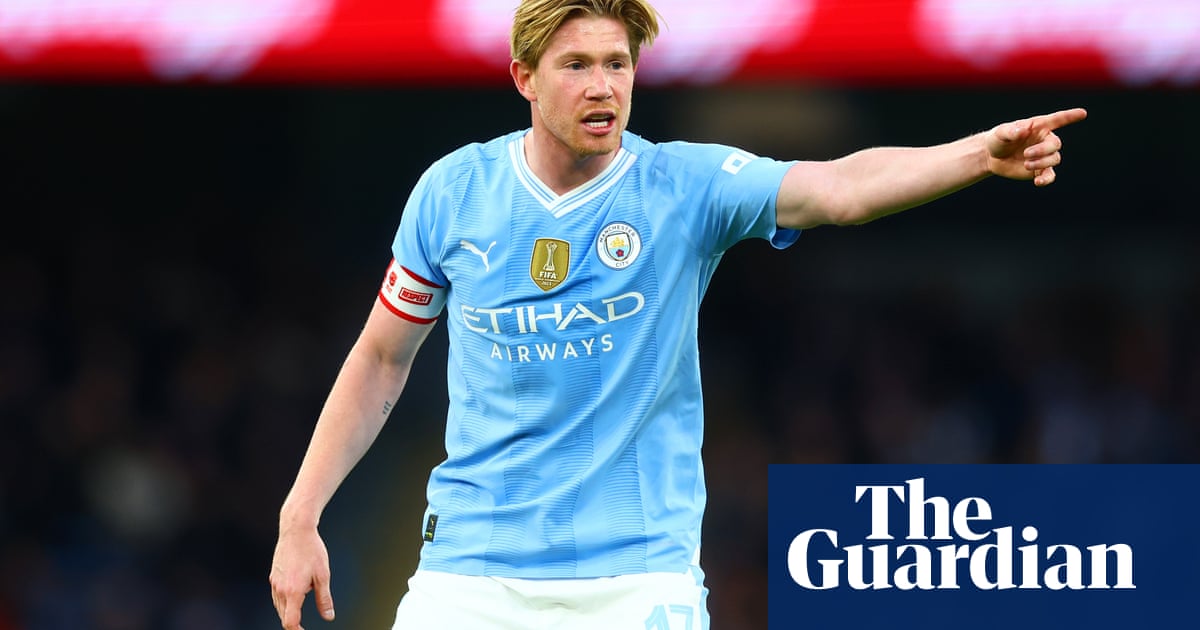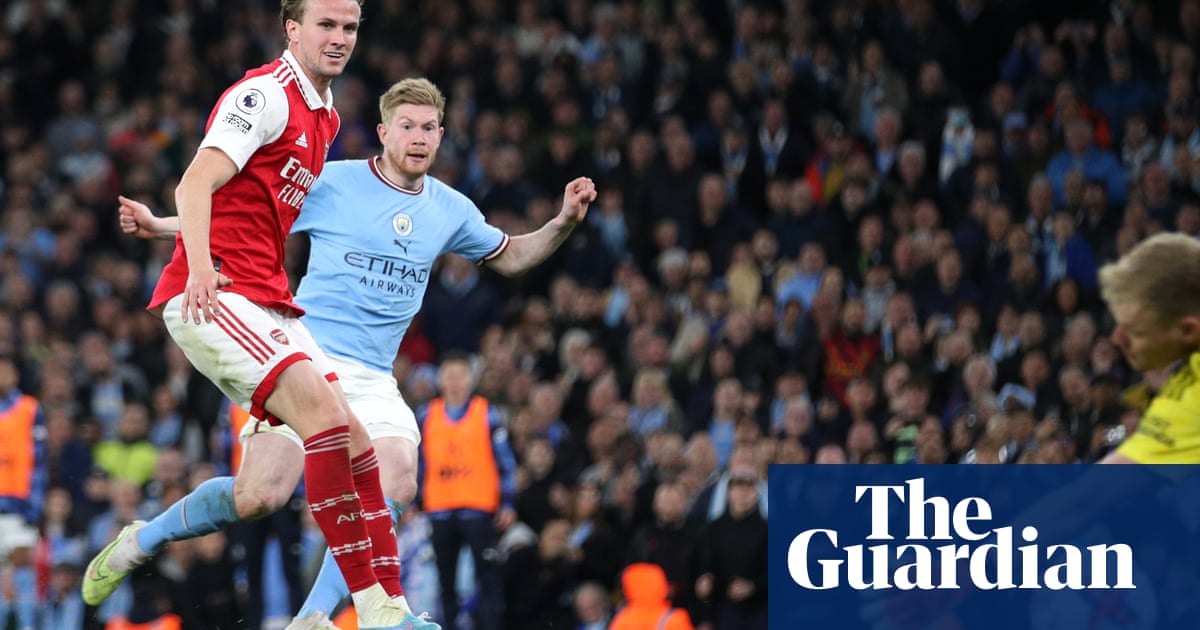
In November last year, Belgium played Estonia in a World Cup qualifier in Brussels. They won 8-1, which meant the game was at least slightly memorable. In the longer term, though, far more significant than the scoreline, and perhaps even than the fact it helped Belgium become the first European side to qualify for the 2018 World Cup, was the fact that Roberto Martínez deployed Kevin De Bruyne as one of the two holding players at the back of midfield in a 3-4-2-1.
True, it was only Estonia and Martínez, secure in the knowledge he was unlikely to be facing a blue wave, could field De Bruyne alongside Axel Witsel and behind Dries Mertens and Eden Hazard, with Romelu Lukaku as the centre-forward, focusing on moving the ball around quickly, looking to circumvent a narrow and deep-lying Estonian defence. But De Bruyne’s influence still stood out. When he returned to Manchester, Pep Guardiola took him aside. “Now I’ve seen you can play in that role,” he told him. “I might try you there as well.”
It’s in that position he’s almost certain to start against his former club Chelsea on Saturday, as perhaps the most dangerous of the trio of players Chelsea sold between 2014 and 2015 now playing leading roles at other top Premier League clubs.
Last season, De Bruyne tended to be most effective when used almost as an old-fashioned inside-forward. He did play wide at times but he looked at his best in that slightly odd 3-2-4-1 Guardiola preferred towards the start of the season. This time round, with the shape a more orthodox 4-3-3, he is in the inbetween role: Fernandinho holds, David Silva is the creator more to the left and his job is to operate on the right, shuttling between the other two midfielders, with greater freedom to interpret his role as the game requires.
Guardiola, in his persistent reinterpretations of the tenets laid down by Johan Cruyff, seems to have gone back to basics, his fundamental template this season approximating to the midfield shape used by the Dutch at the 1974 World Cup or by Argentina four years after (for all that their manager César Luis Menotti was outwardly sceptical of the notion of Total Football). If Fernandinho plays the role of Wim Jansen or Américo Gallego and Silva equates to Wim van Hanegem or Mario Kempes, De Bruyne becomes Johan Neeskens or Ossie Ardiles, combining technical ability with stamina and directness.
There is a clear bond between player and manager. Guardiola can be a strange figure to read, at times bleakly critical of what seemed positive, at others effusive about what seemed ordinary. He is not, though a manipulator in the manner of José Mourinho. Rather, for all he can be disdainful for what he sees as banal or obfuscatory questioning, he glows when he sees something that matches his ideal of football. His critics will see something self-congratulatory in that, but the truth is probably rather that he genuinely wants his audience to share his glee in the expression of an aesthetic ideal.
It was during De Bruyne’s stint at Wolfsburg, after he had left Chelsea, that Guardiola was first impressed by him. “He had that quality, that dedication without the ball, that curiosity, that intelligence,” he said. “He is so clever. He only needs one instruction to know what has to be done. So fast. He produces a huge amount of passes and assists. He’s fast … he sees space better and faster than anybody. He is good with the ball at the foot. He is a complete player.”
But perhaps most importantly, he is a little different. De Bruyne believes he and Guardiola have a good understanding born out of a shared understanding of how football should be played. But amid all the neat passing triangles, he has a specific role: he is the accelerator, the player who gives urgency to the filigree passing.
When people described his style of play as “tiki-taka”, Guardiola railed against it, recognising its origins as an insult coined by Javier Clemente during his time as manager of Athletic, describing what he saw as the pointless, pretty-pretty passing of the Barcelona of the early 80s. De Bruyne’s role is to prevent City’s football ever becoming tiki-taka in that sense.
Since De Bruyne joined City, only Mesut Özil and Christian Eriksen have created more chances than him in the Premier League but the astonishing thing about him this season is that even that’s not really his role any more. His deadlock-breaking opener against Shakhtar on Tuesday showed his capacity for scoring goals, often from next to nothing, but it is completeness that makes him so valuable to Guardiola. He can score goals, he can create them, but more than that, he is a valve, increasing and decreasing pressure as necessary, dictating the rhythm and depth of the play. In a team full of creative talent, he is the grand puppet-master, pulling the strings of all the other puppet-masters, making sure their focus is forwards and not sideways, that the pace never drops.The Guardian Sport












